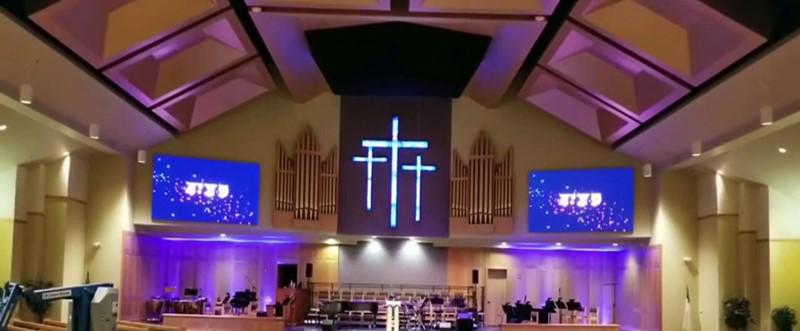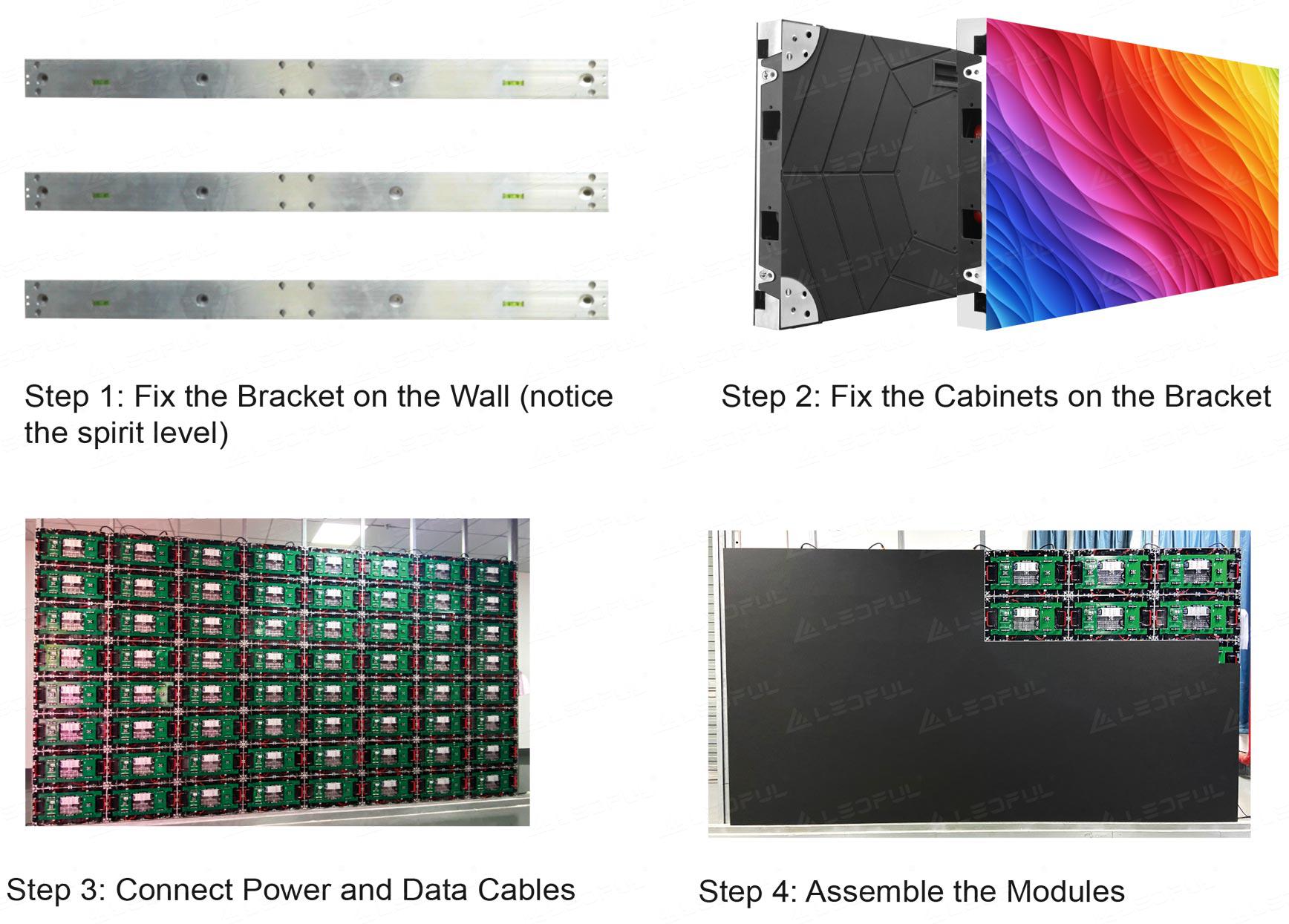In today's digital age, technology has become an integral part of worship services. Churches are increasingly incorporating advanced audio-visual systems to enhance the worship experience and engage their congregations. Among these technologies, the video wall stands out as a dynamic and impactful tool. This guide will provide an in-depth look into church video walls, exploring their origins, benefits, and installation processes.
1. What Is a Church Video Wall?
A church video wall is a large display surface, composed of multiple screens or panels, that can project videos, images, and text in a seamless, cohesive manner. These walls are often used to display song lyrics, scripture, sermons, and other multimedia content during worship services. The aim is to enhance communication and engagement, ensuring that everyone in the congregation can clearly see and participate in the service.

2. The Origin of Church LED Video Wall
The concept of using screens in churches is not entirely new, but the evolution of technology has significantly amplified their potential. Initially, churches used projectors for displaying content; however, the limitations in brightness, picture quality, and maintenance led to the development of more advanced solutions.
LED video wall emerged as a superior option due to their vibrant display capabilities, durability, and scalability. They have become increasingly popular in churches, driven by the desire to leverage the latest technology to enrich worship and communication.
3. Why Do Churches Install LED Video Wall?
Churches install LED video wall for several reasons:
Enhanced Engagement
LED video wall captivate the congregation by providing high-resolution imagery and dynamic content. Their brightness ensures visibility even in well-lit environments, ensuring no message goes unnoticed.
Versatility
These LED video wall provide churches with the flexibility to display a wide range of content, from live event streaming to interactive presentations, making them an invaluable tool for engaging worship services.
Improved Accessibility
By displaying clear and concise information, such as lyrics and sermon points, LED video wall make it easier for the congregation, including those with hearing or visual impairments, to participate fully in the service.
4. Why Choose LED Over LCD or Projection?
Superior Image Quality
LED panels offer better contrast ratios and color accuracy than LCDs or projectors, ensuring vivid and dynamic displays that capture attention.
Durability and Longevity
LED are known for their long lifespan and robustness, which translates into fewer replacements and lower maintenance costs over time.
Flexibility and Scalability
LED video wall can be tailored to fit any space, offering seamless integration and the ability to scale as needed, unlike the fixed dimensions of LCDs and the limited throw distance of projectors.
Energy Efficiency
LED technology is more energy-efficient compared to traditional displays, reducing operational costs and aligning with eco-friendly practices.
5. Factors to Consider When Buying Church Video Wall
Budget
Determine your budget early on, as costs can vary significantly based on size, resolution, and additional features. Consider both upfront expenses and long-term maintenance.
Space and Size
Assess the available space to determine the appropriate size for the video wall. Consider sightlines and the average viewing distance to ensure optimal display quality for the entire congregation.
Resolution
Choose a resolution that matches your content needs and viewing distance. Higher resolutions are ideal for larger spaces where clarity is crucial.
Content Management System
Select a user-friendly content management system that allows easy scheduling, updating, and customization of displayed content.
Vendor Support and Warranty
Look for vendors offering strong support services and warranties, ensuring assistance is available for installation, troubleshooting, and maintenance.
6. Church LED Video Wall Installation Process
Step 1: Fix the Bracket on the Wall
Begin the installation by securely fixing the bracket on the wall. It's crucial to ensure that the bracket is level, so use a spirit level to verify its alignment. This step provides the foundation for the entire video wall, ensuring stability and precision in the subsequent steps.
Step 2: Fix the Cabinets on the Bracket
Once the bracket is in place, proceed to attach the LED cabinets onto it. Align each cabinet carefully to maintain a seamless appearance. Proper fixation is essential for both aesthetic and functional purposes, ensuring that the video wall displays images without distortion.
Step 3: Connect Power and Data Cables
With the cabinets securely mounted, the next step involves connecting the power and data cables. This connection is crucial for the operation of the LED video wall. Ensure that all cables are correctly inserted and secure to prevent any technical issues later on. Good cable management will also enhance the overall appearance.
Step 4: Assemble the Modules
Finally, assemble the individual LED modules onto the cabinets. This step requires precision to ensure that each module is properly aligned, providing a clear and uninterrupted display. Carefully check each module's fit and connection to guarantee optimal performance of the video wall.

7. How to Plan the Solution?
Define Objectives
Clearly outline what you aim to achieve with the video wall, whether it’s improved communication, enhanced worship experiences, or increased engagement.
Engage Stakeholders
Involve key stakeholders, including church leaders and congregation members, in the planning process to ensure the solution meets the community’s needs.
Content Strategy
Develop a content strategy that aligns with your objectives, considering the type of content you will display and how it will enhance the worship experience.
Evaluate Technology Trends
Stay informed about the latest trends and technologies in LED displays to ensure you make informed decisions and future-proof your investment.
8. Conclusion
Church video wall represent a significant step forward in enhancing the worship experience and fostering community engagement. By understanding their benefits, installation processes, and planning requirements, churches can make informed decisions that align with their mission and vision.
Post time: Sep-30-2024







